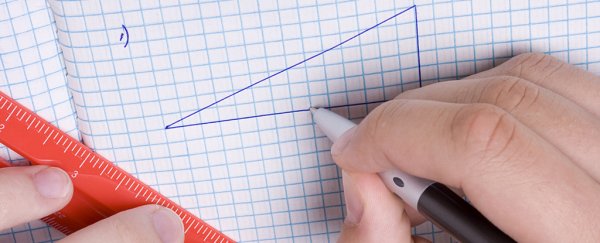There are lots of different strategies for maximising your learning potential, but one of the easiest study-boosters is literally at your fingertips.
Australian researchers have discovered that school children fare better at solving maths problems when they trace their fingers over practice examples, outperforming students who simply read the questions without touching them.
"Our findings have a range of implications for teachers and students alike," said educational psychologist Paul Ginns from the University of Sydney. "They show maths learning by young students may be enhanced substantially with the simple addition of instructions to finger-trace elements of maths problems."
The researchers conducted two separate studies involving 275 school children between the ages of nine and 13, and found that finger-tracing over geometric shapes and digits in previously unseen maths problems involving geometry, algebra, and arithmetic helped the students solve the questions more quickly and easily.
One of the experiments showed a gradient of results, with students who traced directly over characters outperforming those who traced near them, who in turn outperformed those who did not trace at all.
It's not fully understood why the simple act of running your finger over a question while you read it would make the answer easier to arrive at, but the researchers believe it's one way of easing the cognitive burden involved in processing information.
For example, physically touching and tracing the angles of a triangle might result in that information getting priority in your brain, whereas registering the same information by visual means alone wouldn't incur the same effect.
By doing this, it's possible the physical act could reduce the load on working memory and the brain's ability to store and retain complex material by 'chunking' information together, according to the researchers.
While the findings of the studies are new, the learning method itself is not. Students in Montessori schools have long used a tactile approach of teaching the alphabet via sandpaper letters, designed to help introduce the physical form of individual characters to children to help them learn more easily.
This research backs up that technique, and if future studies can back up the findings, it could be an easy, cost-effective way to boost educational outcomes in schools.
"At the classroom level, teachers can assist students to learn new mathematical content by giving instructions to 'trace over' the important elements of worked examples that already appear in mathematics textbooks or worksheets," said Ginns. "This simple, zero-cost teaching approach can enhance the effectiveness of mathematics instruction across multiple areas of the subject."
So can anybody benefit from doing this during study or homework sessions? The researchers don't know for sure, but it's entirely possible that the same approach could work for older students – and in subject areas other than those the researchers have so far examined.
"We are cautiously confident such effects could be applied in the classroom and to subjects outside of maths, but more research is clearly required," said Ginn.
The findings are published in Learning and Instruction and Applied Cognitive Psychology.
